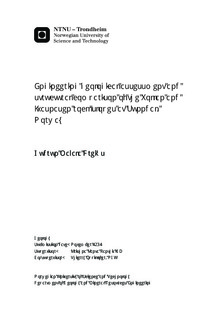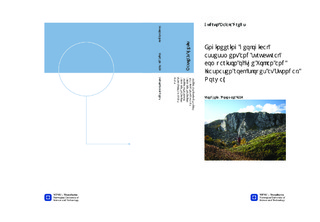| dc.contributor.advisor | Panthi, Krishna Kanta | nb_NO |
| dc.contributor.advisor | Oppikofer, Thierry | nb_NO |
| dc.contributor.author | Dreiås, Gudrun Majala | nb_NO |
| dc.date.accessioned | 2014-12-19T11:55:49Z | |
| dc.date.available | 2014-12-19T11:55:49Z | |
| dc.date.created | 2013-02-06 | nb_NO |
| dc.date.issued | 2012 | nb_NO |
| dc.identifier | 603576 | nb_NO |
| dc.identifier | ntnudaim:8303 | nb_NO |
| dc.identifier.uri | http://hdl.handle.net/11250/236087 | |
| dc.description.abstract | This master thesis has interest in analyzing the two unstable rock slopes Ivasnasen and Vollan. These rock slopes are located in a U-shaped valley in Sunndal municipally (Møre & Romsdal, western Norway). The analyses are based on a combined approach using detailed geomorphic, structural and geological field mapping. This along with interpretation of high-resolution digital elevation models (DEM) and orthophotos, LIDAR-scans from one of the sites (Ivasnasen 2010 and 2011), numerical analysis, kinematic analysis, XRD analysis and laboratory testing. The two sites, Ivasnasen and Vollan are both unstable. Ivasnasen is classified with a historical rockslide and an unstable rock slope, this because a remaining unstable part is detected in the elongation of the back scarp for the historical rockslide. For Vollan an earlier event is still active. It is important to analyze both sides of the valley to get a best knowledge of the possible consequences and the history. The software Ante-Rockslide Topography (ART) is used to reconstruct and construct the topography for Ivasnasen. Detailed volume estimation is used further in the software Slope Local Base Level (SLBL) and a manual ART reconstruction in the PolyWork (software). The calculated volume estimates for the historical rockslide at Ivasnasen range from 5.2Mm3 -1.2Mm3 and from 0.6-2.1Mm3 for the unstable rock slope. The software Phase2 has been used for the numerical modeling. The reconstructed and constructed topography for Ivasnasen have been used for a detailed study of the parameters and trigger factors that affected the slope stability in Phase2.The back scarp at Vollan contains quartzite and the back scarp at Ivasnasen contains augen gneiss. The main failure mechanism is toppling at Vollan and planar sliding at Ivasnasen. The study of Vollan and Ivasnasen provides useful findings for the understanding of potential present rock slope instabilities.It has been concluded that it have been two different events at Ivasnasen, based on analyses that discovered two different back scarps. Due to the numerical modeling in Phase2 the main triggers at Ivasnasen is the groundwater table and most likely a progressive accumulation of rock weakening, where it also include rich biotite layers. A growing tension was build up in the cracks and the slope failed.For Vollan the analysis concludes that it is a really slow movement process acting. Due to the analyses that have been done until now shows that it cannot be characterized as significant movements. For this site it is important to do further investigations over a longer period to have a more determined conclusion. The analyses that have been done in this thesis can be used as good inputs to further investigations. | nb_NO |
| dc.language | eng | nb_NO |
| dc.publisher | Institutt for geologi og bergteknikk | nb_NO |
| dc.subject | ntnudaim:8303 | no_NO |
| dc.subject | MGEOL Geologi | no_NO |
| dc.subject | Miljø- og geoteknologi | no_NO |
| dc.title | Engineering geological assessment and structural comparison of the Vollan and Ivasnasen rock slopes at Sunndal, Norway | nb_NO |
| dc.type | Master thesis | nb_NO |
| dc.source.pagenumber | 146 | nb_NO |
| dc.contributor.department | Norges teknisk-naturvitenskapelige universitet, Fakultet for ingeniørvitenskap og teknologi, Institutt for geologi og bergteknikk | nb_NO |

